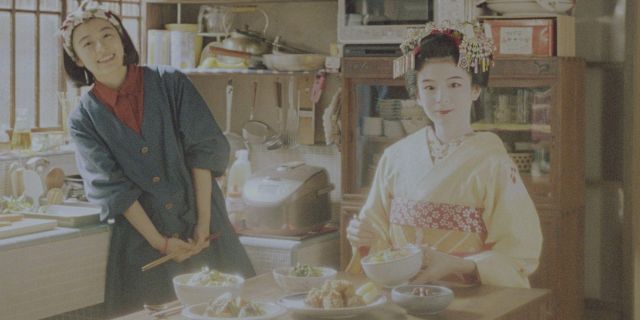Netflix’s live-action manga and anime adaptations have developed quite a reputation. Many that are based on manga and anime have received low to mediocre reviews, with fans of the source material often heading to social media to voice their complaints. However, Netflix’s newest live-action manga adaptation, Makanai: Cooking for the Maiko House, is getting rave reviews from manga fans and critics alike.
Makanai: Cooking for the Maiko House is based on Aiko Koyama’s manga Kiyo in Kyoto: From the Maiko House. This series started life in the pages of Weekly Shōnen Sunday in 2016 and has received widespread praise, even winning the 65th Shogakukan Manga Award for shonen. Here’s what it’s all about — and why its live-action adaptation is succeeding where others have fallen short.
The Story and Context of Makanai: Cooking for the Maiko House

Both Kiyo in Kyoto: From the Maiko House and the live-action Makanai: Cooking for the Maiko House follow childhood friends Kiyo and Sumire, two girls who dream of moving to Kyoto and becoming maiko. Things don’t go as planned, however; while Sumire excels at the job, Kiyo really struggles, leading to the latter getting expelled. Just when Kiyo is at her lowest point, it is discovered that she has a talent for cooking and is thus re-hired — as the maiko house’s chef.
One big reason for the live-action version’s success is because of the source material it chose to adapt. A big issue with many live-action manga and anime adaptions is that they adapt shows that feature details that are hard or costly to depict in the real-world format without resorting to expensive or tricky CGI. This means the final show can end up looking cheap or like a parody of its source material. However, Makanai is a quiet slice-of-life story set in a well-known area of Kyoto, meaning it is easy to film.
In fact, live-action medium can actually improve on the original story in some areas. For instance, most scenes in Makanai are set in houses or retail spaces, and the live-action version can use light, clutter and other small details to make these spaces feel cozy, warm and realistically lived in. A manga, on the other hand, can’t do this as effectively; having too much background detail can make the pages tough to produce and can make the panels hard to read due to them being too busy.
Why Makanai: Cooking for the Maiko House Is a Quality Live-Action Adaptation

The Kiyo in Kyoto: From the Maiko House manga’s focus on food is beautifully realized and even improved by the live-action format in Makanai. While anime and manga foods can be mouthwatering, Makanai’s close-up shots of Kiyo preparing and cooking dishes help capture her emotional state and the setting’s atmosphere, while also using the audience’s senses to immerse them in the story.
Another reason this manga adaption works so well is because of the staff working on it. Hirokazu Kore-eda, most known for his work on 2013’s Like Father, Like Son and 2018’s Shoplifters, was brought in to direct. Hirokazu has won many awards for his cinematography, and many of his films explore unusual or emotionally complex family dynamics. It makes him the perfect choice for Makanai: Cooking for the Maiko House, which also focuses on the emotional bonds within a single household and how the various members feel about and adapt to their changing situation.
On top of this, Makanai has a beautiful soundtrack that helps amplify the mood. Provided by legendary musician Yoko Kanno, the sound is gentle but highly expressive, helping to amplify a scene’s emotions without overshadowing the show’s naturalistic vibe. Plus, its careful instrumentation helps capture the tradition at the heart of the maiko house while also helping viewers understand the characters’ alienation and deviations from these traditions.
Hiring the right staff for an adaption is crucial. An adaptation is more likely to do well when the hired staff understands the original work’s themes and core message, and have past experience bringing similar concepts to the screen. When a new version has to deviate from its source material, it won’t feel so jarring as the team will know how to make these changes feel seamless.
Makanai: Cooking for the Maiko House is proof that Netflix can make quality live-action manga adaptations — by picking the appropriate source material and hiring a team of talented creatives who fit the project. This should give anime and manga fans hope that future live-action projects learn from Makanai and produce adaptations that capture what made their source material so beloved.















Leave a Reply